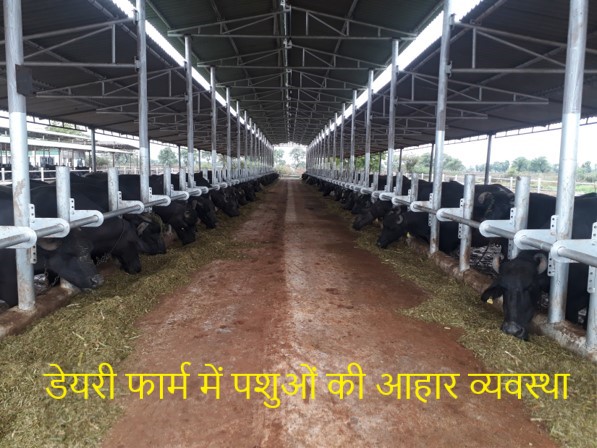Challenges and Strategies for Sustainable Dairy Farming in India
Dr Shashi Tekam
College of Veterinary Science & A.H. Jabalpur, NDVSU
India is the largest milk-producing country in the world with the highest population of cows and buffalo. Since gaining independence, the dairy industry has shown a steady and robust growth rate of 3 percent. There have been significant improvements in the supply chain and milk processing facilities. Despite this growth, cattle farms have not modernized and are facing numerous challenges. Livestock plays a vital role in the Indian economy, providing employment to about 8.8% of the population. India has vast livestock resources, with the livestock sector contributing 4.11% of the GDP and 25.6% of the total Agriculture GDP. Livestock production is a vital sector that provides a major source of income to impoverished rural households around the world. Livestock supply people with food, income, draught power, and fertilizer, and serve as the primary livelihood for millions of people in countries where crop farming faces challenges. India is one of the fastest growing economies in the world and relies heavily on the agricultural sector for progress. The dairy sector is becoming the leading contributor to India’s agricultural wealth, surpassing even cereals. India is the top milk-producing country in the world, accounting for 17% of global production. Annual milk production in India reached 187.7 million tonnes in 2018-19, up from 17 million tonnes in 1951, with an annual growth rate of 6.5%, nearly three times that of the world average. Sustainable dairy farming is influenced by various factors such as production and reproduction environment, livestock longevity, and input management. Milk production provides small-scale farmers with an opportunity to improve their livelihoods.
Livestock plays a crucial role in the Indian economy, with approximately 20.5 million people depending on the livestock sector for their livelihoods. India has abundant livestock resources, and the sector contributes 4.11% to the gross domestic product and 25.6% to the agricultural GDPIndia has the largest buffalo population in the world, with the largest livestock population as well at 535.78 million. The country is home to 192.49 million cows and 109.85 million buffalo. The contribution of dairy animal is widely recognized. Our country is blessed with vast dairy resource. Dairy farming involves a group of interaction of many factors that influence production and reproduction, environment and management. Dairy cooperatives cover about 60,000 villages all over India and only 12-14 per cent of total milk production is canalized through organized sector. Concerted efforts should, therefore be directed towards unorganized dairy farmers by providing necessary inputs and make them to adopt newer milk production technologies. India has become the world’s largest milk producer but its share in the world milk trade is very minimal. An attempt to identify problems of the farmers and to resolve the same for improving the export earnings and higher returns to dairy farmers is discussed in this paper. Various tips have also been given for efficient identification and formulation of dairy husbandry. Ever since the creation of mankind, the major thrust has been on the search for food for existence. Thus, for human population, the nature provided a continuous supply of food. Plants and animals were utilized by man as foods during the prehistoric period. Subsequent domestication of animals and evolution of crop raising activities made animals farming as a subsidiary to agriculture. In western countries, animal husbandry is even now referred to as ‘Animal Agriculture’. However, of late, dairy industry has shown the ability to sustain itself as a profitable industry in many sphere over-powering the traditional dominance exercised by agriculture. This trend is witnessed all over the world. Fortunately, our country is blessed with vast dairy resources. Cattle and buffaloes population are the highest in India (Annual report, 2000). Dairying is acknowledged as the major instrument in bringing about socio-economic transformation of rural poor in our country. Milk is the second largest agricultural commodity produced in our country next only to rice. India’s bovine population is about 19.2 per cent of worlds and 51.0 per cent of Asia’s population with annual production of about 121.50 million tons of milk (2011). Considering the biological value of milk protein, our traditional habit of including milk in daily dietary have been one of the most important factors that had saved millions of children of our country from developing malnutrition syndromes. Since, ever growing human population is making scarcely available land still more scarce, our aim to improve milk output should be by way of improving productivity of the animals rather than increasing the heads of bovine population. Concerted efforts should henceforth be directed towards the dairy farmers contributing major proportion of our country’s milk production to provide necessary input and make them adopt newer technologies in breeding, housing, feeding, rearing and health care to ensure substantial growth in milk output. Further, even though India has become the world’s largest major milk producer with the cost of milk production being very low next only to New Zealand, its share in world’s milk trade is very minimal. Exports earnings through ghee, skim and whole milk powders are increasing, while the import of special cheeses and butter oil is also showing an increasing trend. Under the most favorable environment, created by WTO agreement, to improve our export earnings through this sector and ensure better returns to dairy farmers, research efforts should be directed towards new product development through biotechnology (genetically modified cultures and convenient packaging, ensuring, higher shelf life). Further, improved compliance to milk food legislation and conforming to international standards will also aid in improving export avenues for dairy products. Indian dairy industry is so well developed on modern lines. It has acquired the technologies and engineering capabilities so well that now it is in a position to even export such technologies to other nations.



